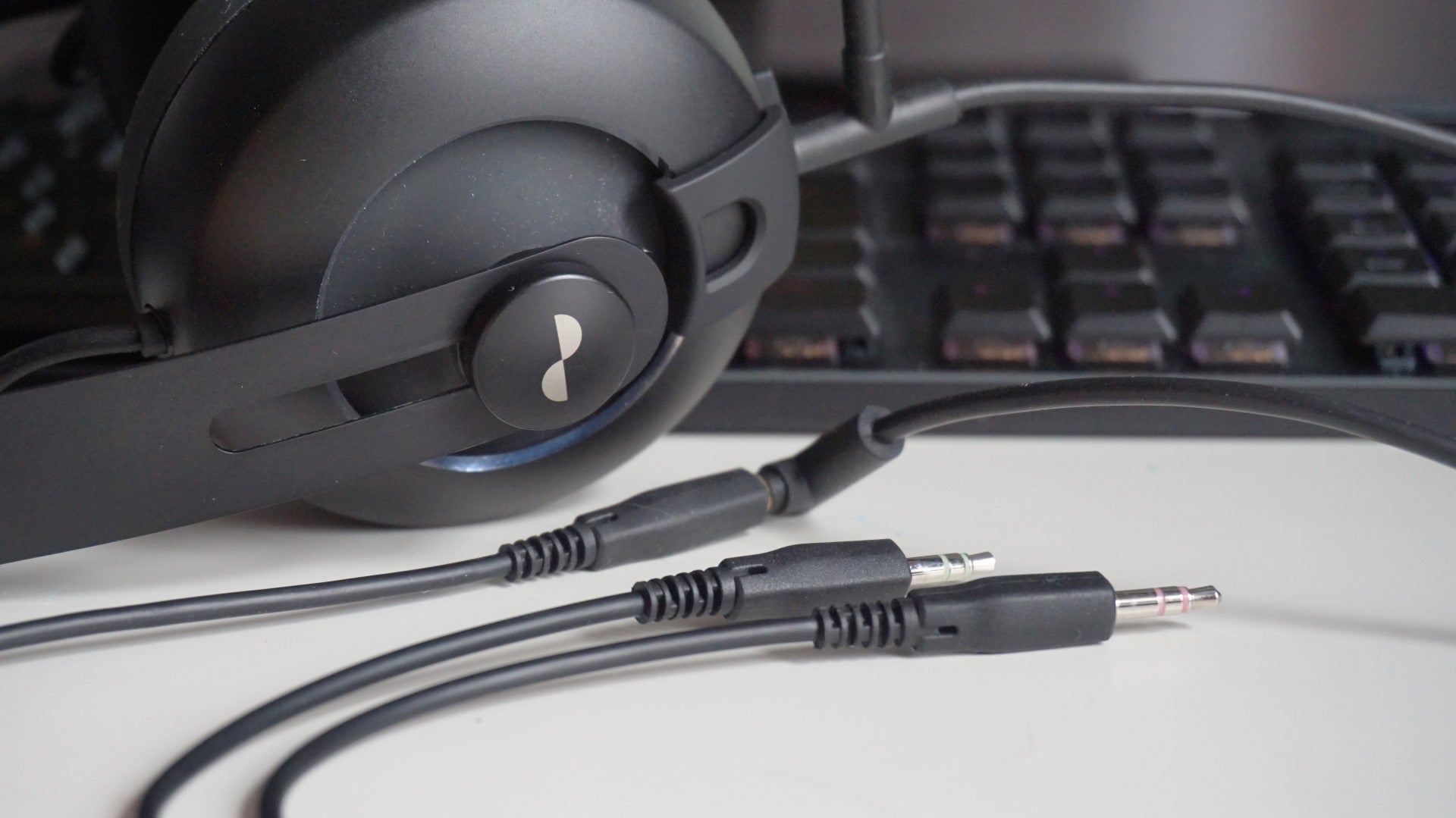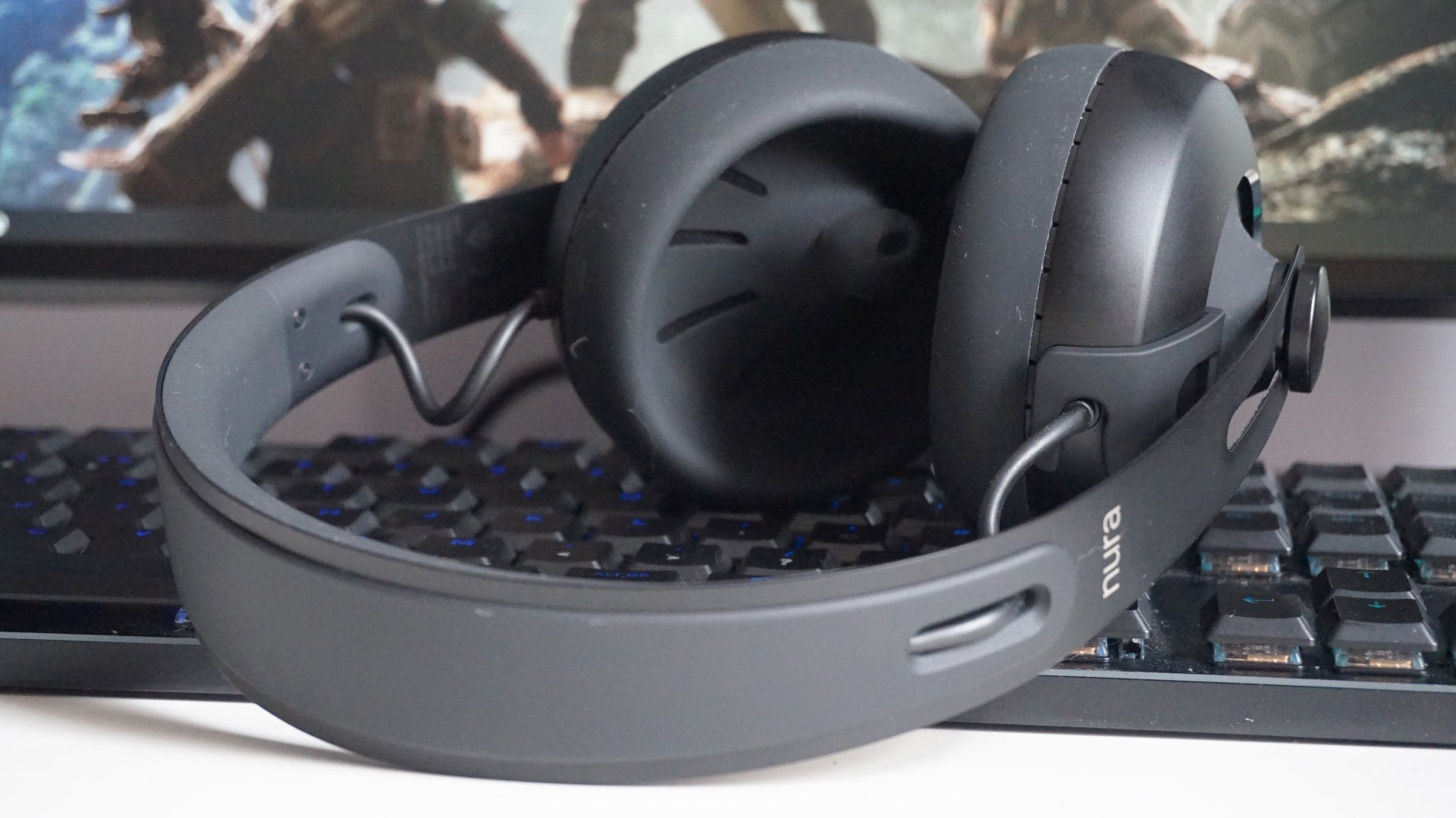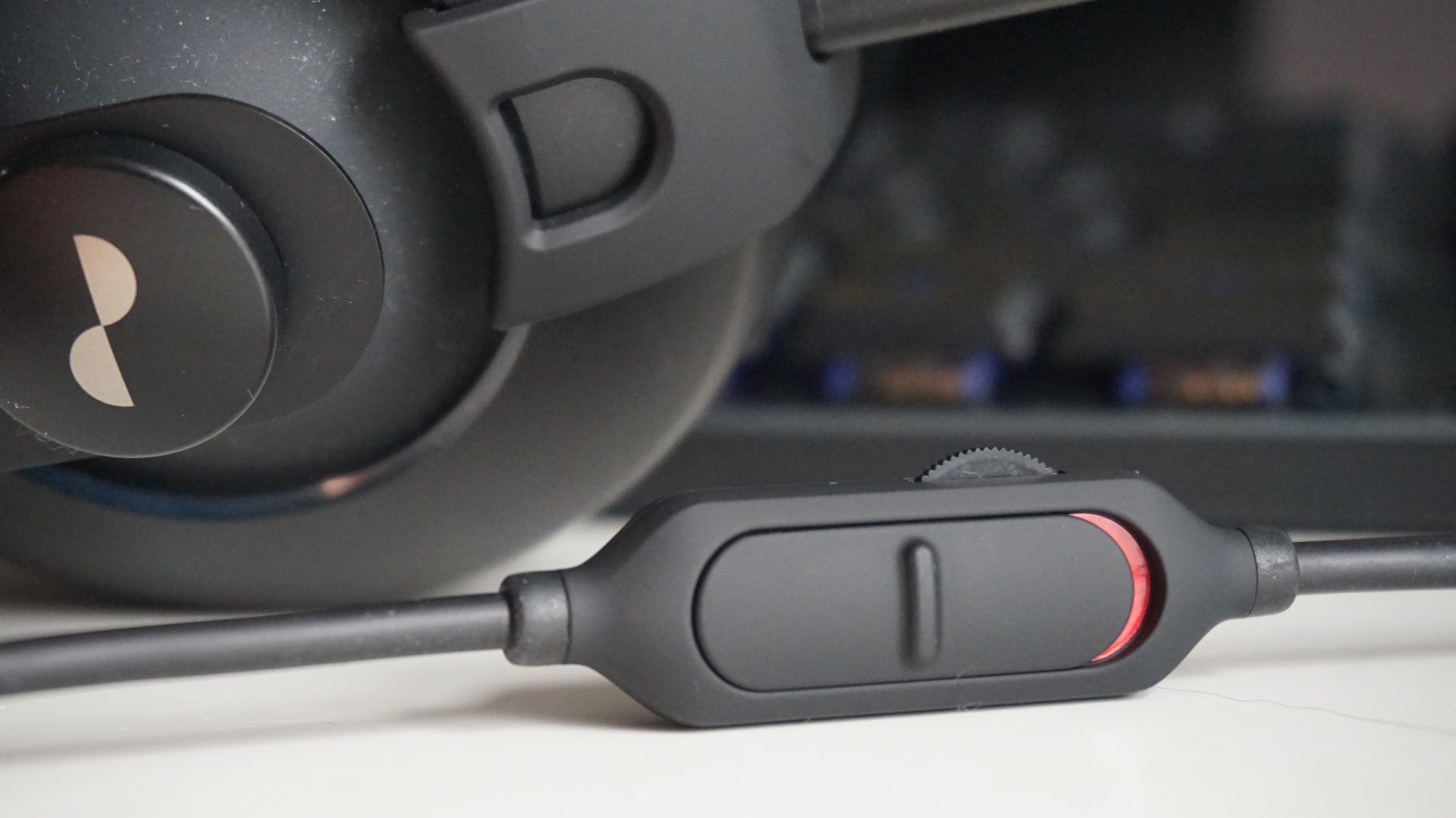Priced at £50 / $50, the Nuraphone Gaming Microphone is pretty reasonably priced compared to other standalone mics you can get for your PC right now. A Blue Yeti will currently set you back £119 / $122, for example, while other attachable headset mics such as Antlion’s ModMic can be had for a similar amount of money (or more, if you want the USB and wireless versions). It’s actually a bit cheaper if you buy it together with a pair of Nuraphones, as Nura currently have a bundle available for £370 / $420, which is only another £20 / $20 on top of the original headphone price. That’s still a lot of cash compared to other gaming headsets that come with a mic as standard, of course, especially when Nura doesn’t include a 3.5mm audio splitter in the box. Yep, the Nuraphone Gaming Microphone only comes with a combined 3.5mm audio jack out of the box, which is fine if you’re plugging it into a console or phone or most gaming laptops, but not much use for connecting it to your PC. After all, 99.9% (if not all) PCs still come with dedicated headphone and microphone jacks, which means you’ll have to buy a splitter separately before you can use it as a proper headset. You see, despite operating over Bluetooth aptX normally, all wireless functionality gets cut off once you stick something into its charging port - be it its bundled charging cable or this new microphone. This was one of the big complaints I had with the Nuraphone when I first reviewed it a couple of years ago, because unless your PC has a built-in Bluetooth adapter (which not all motherboards do), then you’ll need to wire it in via its USB charging cable, which means you lose access to its extra touch-sensitive volume controls and its active noise cancelling ‘social mode’. This is why you need a splitter for PC, because even if you do happen to have a motherboard that supports Bluetooth, you won’t be able to connect the Nuraphone to it when the mic’s plugged in. Nura do recommend a couple of approved splitters on their website, and thankfully they’re relatively inexpensive, costing just £4 / $9. But it’s still a bit of a pain that they don’t come as standard in the box, and it’s yet another extra cost to take into consideration when you’re adding it all up. Still, once the Nuraphone and the mic are plugged into your PC via a stereo audio splitter, it’s pretty plain sailing. The microphone comes with a little security clip in the box that hooks firmly in the little ridge on the right earcup to prevent it from falling out of place, and the microphone cable has an inline mute and volume control that’s very easy to operate. I particularly like the sliver of red that appears when you slide the mute button down so you know what mode it’s in. The cable itself is pretty long, too, and its 2m length should give you plenty of leeway for connecting it to the front or back of your PC depending on where your audio jacks live. The quality of its unidirectional microphone was excellent as well. When I recorded myself talking in Audacity, for example, my voice came through crystal clear and I couldn’t detect any signs of pesky background hiss. It’s a reasonably short microphone compared to other headset mics I’ve tested in the past, reaching more or less to the end of my jawline, but it still picked up everything perfectly fine. There’s a bit of give in its bendy boom arm, but forcing it too close to your mouth is only likely to introduce more breathy plosive sounds. Instead, I found it produced the best sound when it was just sitting in its default position along the edge of my jawline. It also picked up quite a lot of other sounds in my vicinity, though, which may not be ideal for your mates listening on the other end. I could clearly hear myself typing while I was speaking, for example, which isn’t always the case on other gaming headsets, and it also picked up the sound of my cat leaping up onto the radiator beside me that was about a metre away from where I was sitting. It’s clearly got a pretty decent range, then, despite its tiny size, and this may not be particularly conducive if your PC lives in a particularly noisy area of your home. As for the headset itself, this functions in exactly the same way as before. If you’re buying one for the first time, then you’ll need to download the Nura app on your phone to set up your personalised audio profile before you do anything else, but this only takes a couple of minutes and once it’s done you’ll never need to open up the app again unless you want to activate its Bluetooth discovery mode so you can pair it with another device. It’s still rated for 20 hours battery life when you’re using it wirelessly, and it still turns on automatically and reads out its remaining battery percentage when you put it on your head. As I mentioned above, you do lose its extra wireless features when it’s wired into your PC. These include being able to change the volume, pausing, playing and skipping music tracks, activating its active noise cancelling tech and enabling its extra bass-y ‘immersion mode’, all by tapping the little Nura logos on its earcups. This remains a bit of a bugbear for me, but the microphone does help remedy this to some degree. The mic’s inline volume dial is much easier to use than tapping my head countless times to make something louder and/or quieter, for example - and I can definitely live without being able to pause or skip tracks. However, I do wish there was some way to get its active noise cancelling ‘social mode’ to work while it’s wired in. It’s not a complete dealbreaker, but it would make it much easier to chat to people quickly without removing the entire headset. Ultimately, the Nuraphone Gaming Microphone is a great add-on for existing Nuraphone owners, and it’s good to see there’s now a bundle to get them both with a bit of a discount. I wouldn’t say it’s necessarily changed my opinion of the Nuraphone headphones themselves, though. As I said in my initial Nuraphone review, there’s a lot to like here if you’ve got the cash and have always struggled to find a headset you like, as its personalised audio tech really does work and produces a great quality sound. However, as a pure PC gaming headset there are plenty of other headsets out there that do more for less, such as the enduringly excellent Steelseries Arctis 7 and Logitech G Pro X, which are currently two of my top recommendations over in my best gaming headset rankings. The lack of a bundled audio splitter adapter is another big turn-off for me here, and when you add in the loss of the Nuraphone’s extra wireless features, it just feels like you’re having to put up with one too many compromises to get this working with your PC.



